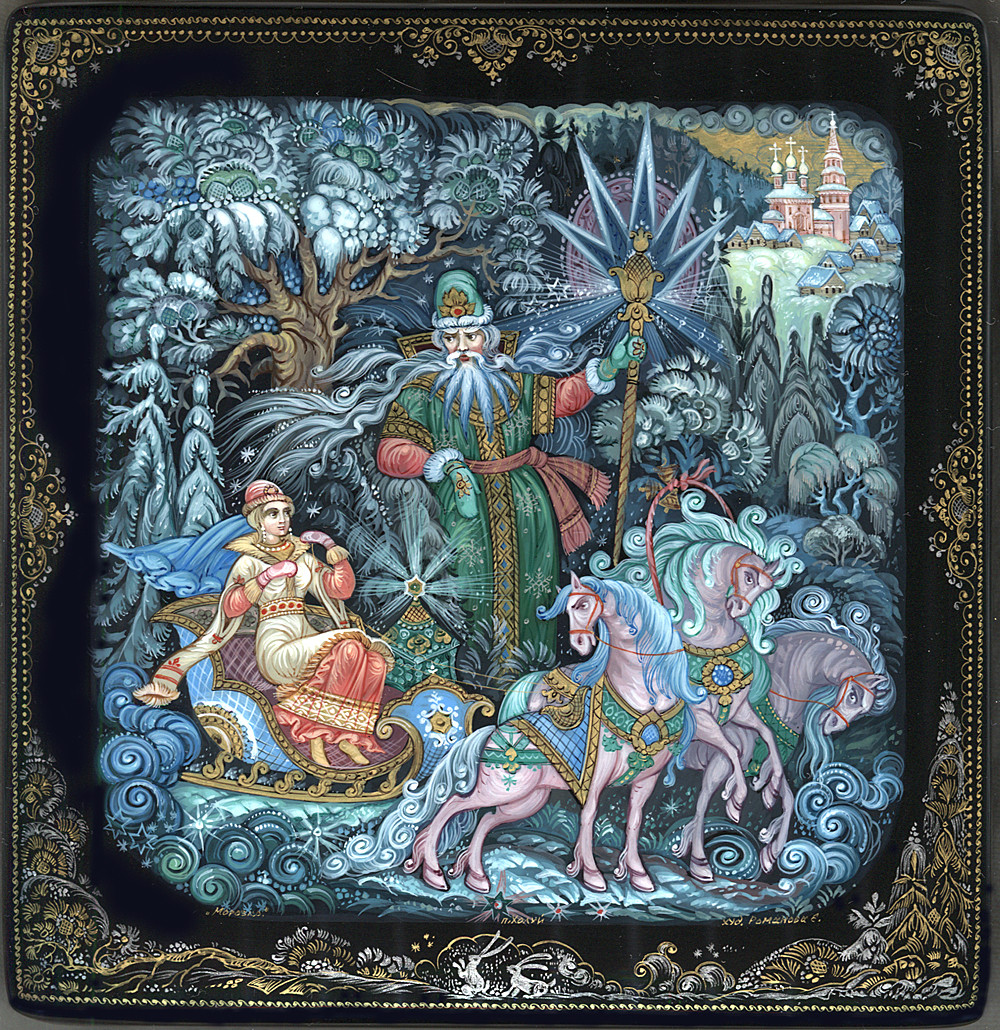Kholui is a an ancient village located in the Vladimir-Suzdal region just a few hundred kilometers northeast of Moscow. Historical records show that Kholui was already a recognized center for icon painting and production as early as 1613. By the mid-18th century, most of the residents of the village were involved in some aspect of producing an annual output of over one million icons. Today, however, Kholui is best known for its production of Russian lacquer boxes. The transition from icon painting to lacquer box production was not easy and it was not by choice.
With the October Revolution of 1917 came a government ban on icon painting. Churches were closed and the people who had made their livelihoods producing icons were suddenly out of work. For many years the artists of Kholui struggled to make a living in various endeavors, but many of them longed to return to the creative work of artistic painting.
In the nearby villages of Palekh and Mstera, icon painters were in the same situation. In Palekh a group of artists joined together to find an alternative to icon painting. They saw the success of lacquer miniature painting in the village of Fedoskino, and decided to pursue a similar enterprise. They borrowed the methods of pâpier maché production and lacquering from Fedoskino, but used their traditional icon painting techniques to decorate their products. Thus, in December of 1924 the Old Painting Artel was formed in Palekh.
Kholui artists did not make the transition to lacquer painting as quickly as those in Palekh and Mstera. Many of the artists had left the village in pursuit of work elsewhere. It was not until 1934, inspired by the work being done in Palekh and Mstera, that a small group of Kholui's former icon painters joined together to form their own association for the production of lacquer miniatures.
It took time and effort for the Kholui artists to develop a distinctive style, one that differed from Palekh and Mstera art. During the war years, beginning in 1941, the Kholui art school shut down while the men were called off to serve in the military. After the war, a government vocational school was opened in the village with a four year program focussed on lacquer miniature painting. Kholui was finally recognized as having developed its own unique style and artistic tradition in 1959 with a conference and exhibit that was held in honor of its 25th anniversary.
Kholui lacquered miniatures share some traits with both Palekh and Mstera art, yet maintain a distinctive lyrical quality of their own. As in Palekh and Mstera lacquer miniature paintings, Kholui artists use egg tempera paints just as they did when painting icons.
One recognizable characteristic of Kholui miniature art is the stylized swirling, circular form found in details such as clouds, water, and snow.
Sometimes, as with Palekh miniatures, Kholui miniatures will include some fine gold and/or silver ornamentation within the painting. Also, Kholui lacquer box artists can create fantastic ornamental borders on par with those of Palekh. Kholui boxes are usually signed with gold in the margin between painting and border. While the artist's name and village name are provided, the paintings are rarely dated and may or may not be titled.

